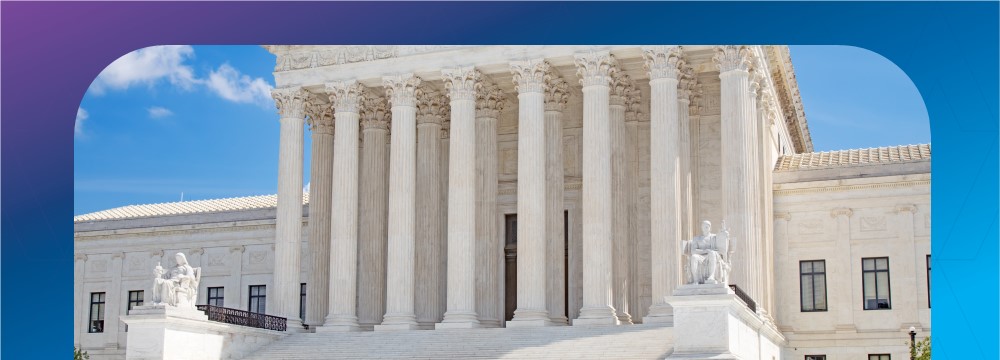Supreme Court’s Chevron Decision: Major Implications for Businesses on Regulatory Interpretations
June 29, 2024 – Legal Alerts
“The deference that Chevron requires of courts reviewing agency action cannot be squared with the [Administrative Procedures Act].”[1]
The Administrative Procedures Act[2] (the “APA”) is a federal law that outlines the procedures that federal agencies must follow and provides federal courts with guidelines for reviewing the actions of these agencies. In a highly anticipated decision, authored by Chief Justice John Roberts,[3] the United States Supreme Court has overruled the doctrine articulated by Chevron U.S.A., Inc. v. Natural Resources Defense Council, Inc.[4] which ultimately became the leading case on the judiciary’s role in reviewing agency regulations under the APA.
Under the so-called “Chevron two-step,” federal courts have been required to defer to an agency’s interpretation of the statute the agency administers when the statute is “ambiguous,” even when the court disagrees with the agency’s interpretation.[5]
This represented, however, “a marked departure from the traditional approach.”[6] Rather, as noted in this week’s opinion, from the time of the inception of our union, it has been foundational that “it is emphatically the province and duty of the judicial department to say what the law is.”[7] According to the Court, this traditional framework is in fact codified by the APA, but was turned on its head by the Chevron doctrine. Chief Justice Roberts wrote that the APA requires “courts [to] decide legal questions by applying their own judgment.”[8]
Proponents of Chevron and its progeny have long maintained that the doctrine is valuable because it allows for statutes to be interpreted by experts in what are often highly technical fields.[9] The Loper Bright decision, however, does not mean that Courts cannot be guided by the interpretation of federal agencies or other experts.[10] In fact, the Court noted that while “[c]ourts must exercise their independent judgment in deciding whether an agency has acted within its statutory authority . . . [c]areful attention to the judgment of the Executive Branch may help inform that inquiry.”[11] The decision also does not mean that federal agencies will never be given deference by the judicial branch. Rather, it means that in order to be entitled to such deference, congressional intent to give the agency that authority must be clear.[12]
Finally, the Court rejected the notions that Chevron should be upheld based upon stare decisis principles and that overruling the doctrine will negatively impact the ability of the law to develop uniformly.[13] The Court also emphasized that in its view, “there is little value in imposing a uniform interpretation of a statute if that interpretation is wrong. We see no reason to presume that Congress prefers uniformity for uniformity’s sake over the correct interpretation of the laws it enacts.”[14] And while the Court overruled the Chevron doctrine, Chief Justice Roberts was careful to clarify that prior cases that relied on the Chevron framework were not overruled per se.[15]
Under this revised framework, when agency rules and decisions are challenged in court, judges will employ the rules of statutory interpretation to determine the “best” reading of the statute. They must exercise their independent judgment when determining the meaning of statutory provisions, but they are not precluded from seeking aid from the interpretations of experts or agencies that are responsible for implementing the statutes.
In the wake of this impactful Supreme Court decision, Dinsmore attorneys will be closely monitoring the issue and keeping our clients, particularly those who operate in heavily regulated industries, up to date on new developments.
[1] Loper Bright Enter. v. Raimondo, No. 22-451, at 19 (U.S. June 28, 2024), to be reported at 603 U.S. ___ (2024).
[2] 5 U.S.C. § 551 et seq. (1946).
[3] Justices Thomas, Gorsuch, Kavanagh, and Barrett joined in the opinion. Justices Thomas and Gorsuch also wrote separate concurring opinions.
[4] 467 U.S. 837 (1984).
[5] Id. at 843.
[6] Loper Bright Enter., No. 22-451, at 18.
[7] Id. at 7 (quoting Marbury v. Madison, 1 Cranch 137, 177 (1803)).
[8] Id. at 3 (“The APA prescribes procedures for agency action and delineates the basic contours of judicial review of such action. And it codifies for agency cases the unremarkable, yet elemental proposition reflected by judicial practice dating back to Marbury: that courts decide legal questions by applying their own judgment.”).
[9] Id. (Kagan, J., dissenting) (“Some interpretive issues arising in the regulatory context involve scientific or technical subject matter. Agencies have expertise in those areas; courts do not. Some demand a detailed understanding of complex and interdependent regulatory programs. Agencies know those programs inside-out; again, courts do not.”)
[10] Id. at 24-25.
[11] Id. at 35.
[12] Id. at 17 (“When the best reading of a statute is that it delegates discretionary authority to an agency, the role of the reviewing court under the APA is, as always, to independently interpret the statute and effectuate the will of Congress subject to constitutional limits. . . . By doing so, a court upholds the traditional conception of the judicial function that the APA adopts.”)
[13] Id. at 25 (“Nor does a desire for the uniform construction of federal law justify Chevron. Given inconsistencies in how judges apply Chevron, . . . it is unclear how much the doctrine as a whole (as opposed to its highly deferential second step) actually promotes such uniformity.”).
[14] Id.
[15] Id. at 34 (“The holdings of those cases that specific agency actions are lawful—including the Clean Air Act holding of Chevron itself—are still subject to statutory stare decisis despite our change in interpretive methodology. See CBOCS West, Inc. v. Humphries, 553 U. S. 442, 457 (2008).”).

